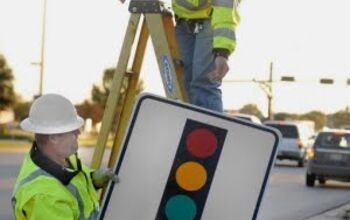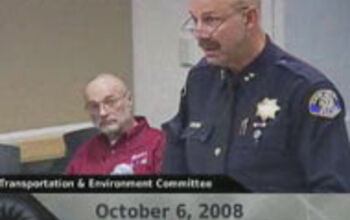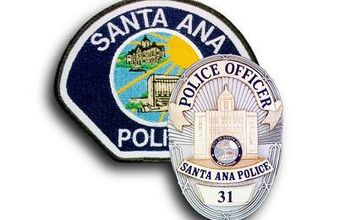Fourth California County Rejects Red Light Camera Evidence
A consensus is growing among the appellate divisions of the California Superior Court that red light camera evidence currently offered by private companies does not meet the appropriate legal standard of proof. In December, a three-judge appeals panel in San Bernardino handed down a unanimous decision reversing the photo ticket issued to motorist John Macias.
Macias received a ticket in the mail after his car was photographed in Victorville on January 10, 2009 making a slow right-hand turn at a light that had been red for 0.36 seconds. His attorney, Robert D. Conaway, argued that when San Bernardino County Sheriff’s Deputy Baker testified as a witness against Macias, Baker had no personal knowledge of the facts of the case. As such, his evidence was hearsay.
Baker countered that he had attended a 20-hour seminar provided by Redflex Traffic Systems, the for-profit Australian company that runs all aspects of the photo ticketing program for Victorville. Under questioning, Baker had no idea whether the photographs he brought to court had ever been encrypted or compressed. He did not know whether the Redflex technicians who worked on the camera system were certified or qualified in any way. The trial judge found Baker’s testimony sufficient and convicted Macias. The three-judge panel disagreed, insisting that Baker’s evidence was not sufficient under the law.
“He did not, and could not, attest that the photos or videos were true representations of what they purported to depict because he had no such personal knowledge,” the appellate judges wrote. “In short, Deputy Baker failed to provide any of the evidence necessary to lay a foundation for the admission of the photographs or the videotape into evidence… Accordingly, the evidence was inadmissible under the Evidence Code section 1401, and the trial court abused its discretion by admitting it. In the absence of any admissible evidence to support the conviction, the judgment must be reversed.”
As photo enforcement lobbyists predicted, the US Supreme Court’s Melendez-Diaz case underscoring the importance of the Confrontation Clause has undermined the ability of automated ticketing machines to operate the in the Golden State. Appellate divisions in Alameda, Kern, Orange, and San Mateo counties have also found the images presented in court by private vendors to be inadmissible hearsay. In addition, San Diego’s trial court has handed down rulings following the same reasoning. While the decisions only have precedential value, when published, in these counties, the jurisdictions cover a population of over 10 million.
A copy of the decision, courtesy of the highwayrobbery.net website, is available in a 1mb PDF file at the source link below.
California v. Macias (California Superior Court, Appellate Divison, 12/21/2010)
[Courtesy: Thenewspaper.com]
More by The Newspaper
Latest Car Reviews
Read moreLatest Product Reviews
Read moreRecent Comments
- Jeff I noticed the last few new vehicles I have bought a 2022 Maverick and 2013 CRV had very little new vehicle smell. My 2008 Isuzu I-370 the smell lasted for years but it never really bothered me. My first car a 73 Chevelle and been a smoker's car after a couple of months I managed to get rid of the smell by cleaning the inside thoroughly, putting an air freshener in it, and rolling the windows down on a hot day parking it in the sun. The cigarette smell disappeared completely never to come back. Also you can use an ozone machine and it will get rid of most odors.
- Lou_BC Synthetic oil for my diesel is expensive. It calls for Dexos2. I usually keep an eye out for sales and stock up. I can get 2 - 3 oil and filter changes done by my son for what the Chevy dealer charges for one oil change.
- Joe65688619 My last new car was a 2020 Acura RDX. Left it parked in the Florida sun for a few hours with the windows up the first day I had it, and was literally coughing and hacking on the offgassing. No doubt there is a problem here, but are there regs for the makeup of the interiors? The article notes that that "shockingly"...it's only shocking to me if they are not supposed to be there to begin with.
- MaintenanceCosts "GLX" with the 2.slow? I'm confused. I thought that during the Mk3 and Mk4 era "GLX" meant the car had a VR6.
- Dr.Nick What about Infiniti? Some of those cars might be interesting, whereas not much at Nissan interest me other than the Z which is probably big bucks.


































Comments
Join the conversation
Here in Albuquerque, the news radio reported there are over $8 mil of unpaid camera tickets. Due to the uncertainties of red light cameras, they don't count as a citation or points against your license. They are not reported to insurance. Apparently one lady had over 60 of them. All the city can do is send them to collections. Since the notices are sent regular mail, there is no proof the alleged offender even received the notice. Given the number of people in this town who are hit by someone trying to make it through a very orange light, I am in favor of putting up more of them to balance the city budget on the back of the people who complain "I drive a truck with brakes that won't stop it fast enough to avoid running the red light."
If you're really worried about cameras, try to drive a car registered in someone else's name - eg, when you and your wife get cars, register each in the other's name. You can't get a ticket if someone besides the owner is pictured.